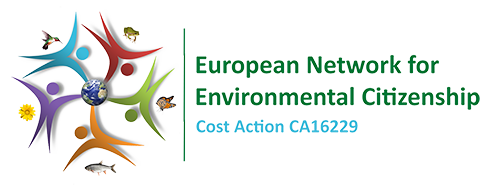Search Results Resources
You have searched in Resources with the following criteria: << Go Back
The search returned 68 results.
Benito Cao
- From
- 15
- To
- over 25
Learning Environmental Citizenship
English
Australia
- Knowledge
- Skills
- Competencies
- Values
- Attitudes
- Behaviours
- Economic Aspects of Environmental Citizenship
- Social Aspects of Environmental Citizenship
- Political Aspects of Environmental
- Citizenship
- Environmental Citizenship General
- Individual actions
- Collective actions
- Actions in Private sphere
- Actions in Public sphere
- Actions in Local scale
- Actions in National scale
- Actions in Global scale
- Achieving critical & active engagement and civic participation
- Practising environmental rights & duties
- Promoting inter- & intra-generational justice
- Developing healthy relationship with nature
- Achieving sustainability
- Civic Participation
- Evaluation and Reflection
This chapter outlines the main articulations of environmental citizenship that emerge from formal education, mass media and popular culture. The chapter includes a section on the most popular and widespread pedagogical device used to produce environmental citizens, the ecological footprint.
Benito Cao
- From
- 15
- To
- over 25
Learning Environmental Citizenship
English
Australia
- Knowledge
- Skills
- Competencies
- Values
- Attitudes
- Behaviours
- Economic Aspects of Environmental Citizenship
- Social Aspects of Environmental Citizenship
- Political Aspects of Environmental
- Citizenship
- Environmental Citizenship General
- Individual actions
- Collective actions
- Actions in Private sphere
- Actions in Public sphere
- Actions in Local scale
- Actions in National scale
- Actions in Global scale
- Addressing structural causes of environmental problems
- Achieving critical & active engagement and civic participation
- Practising environmental rights & duties
- Promoting inter- & intra-generational justice
- Developing healthy relationship with nature
- Sustain Environmental and Social Change
- Civic Participation
This set of powerpoint slides outlines a range of environmental citizenship pedagogies and the different types of environmental citizens they contribute to produce (e.g. personally-responsible, participatory, justice-oriented, consumer-citizen).
Benito Cao
- From
- 15
- To
- over 25
The Ecological Footprint
English
Australia
- Knowledge
- Skills
- Competencies
- Values
- Attitudes
- Behaviours
- Economic Aspects of Environmental Citizenship
- Social Aspects of Environmental Citizenship
- Political Aspects of Environmental
- Citizenship
- Environmental Citizenship General
- Individual actions
- Collective actions
- Actions in Private sphere
- Actions in Public sphere
- Actions in Local scale
- Actions in National scale
- Actions in Global scale
- Addressing structural causes of environmental problems
- Achieving critical & active engagement and civic participation
- Practising environmental rights & duties
- Promoting inter- & intra-generational justice
- Developing healthy relationship with nature
- Sustain Environmental and Social Change
- Civic Participation
- Evaluation and Reflection
This set of powerpoint slides explores the uses of the ecological footprint as a pedagogical tool in education for environmental citizenship.



